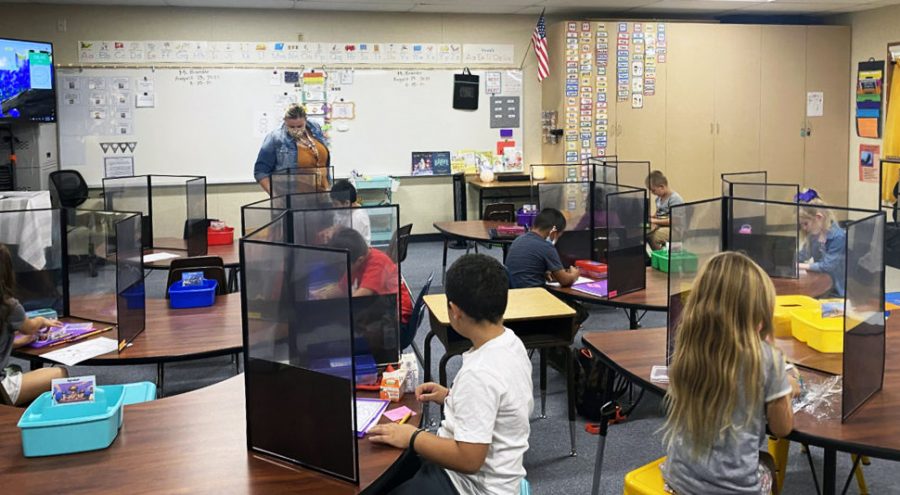Hazard Pay is More Necessary Than Ever For Teachers
In person learning would likely feature precautions such as shields, masks, and distance to protect students and teachers.
The ongoing COVID-19 pandemic has created a tenuous situation in schools across the nation, as teachers and administrative staff struggle to limit learning loss. During this difficult time, discussions of reopening schools have been ongoing as early as the first month of the pandemic. Although Irvington won’t reopen for this school year due to failed negotiations between the Fremont Unified School District (FUSD) and Teacher’s Union (FUDTA), it is still important to examine what it might look like next year in terms of teacher’s salaries. Before teachers return to school in a pandemic, they deserve higher pay and better working conditions.
School staff are especially high risk for COVID-19. Elementary school teachers will likely see 30 different students per week, while high school teachers may see up to 150. This explains why, according to a HealthAffairs research paper, “42-51% of all school employees meet the Centers for Disease Control and Prevention’s (CDC’s) definition of having or potentially having increased risk for severe COVID-19. Among all adults with CDC-defined risk factors for severe COVID-19, between 33.9 million and 44.2 million had direct or within-household connections to schools.” This percentage is even higher for janitorial staff, meaning that those with the lowest salaries in schools are the most likely to be negatively affected by the reopening process.
Hazard pay is a common standard set for essential workers in much of California. According to JD Supra, a US law firm, 25 out of 47 counties in California provide some level of additional payment for working in dangerous conditions. While each county has its own specific framework for this provision, most provide $3-5 per hour to “grocery and drug store employees, as well as some other essential workers, such as maintenance workers and security guards.” The current structure suggests that essential workers are those who cannot do their jobs virtually and are extremely important for the basic needs of the population. Reopening schools would also create this same situation for teachers. Alameda County, with its high cost of living, will be creating a $5/hr hazard pay starting May 6th, which is further proof that additional pay should be allocated to teaching and janitorial staff.
Moreover, teachers require additional pay because of the untenable living situation in Fremont and Alameda County. According to EdSource, there is already a teacher shortage in the Bay Area due to high rent. Many are being forced to leave for other states such as Texas, and some counties are also considering creating specific low-cost housing for displaced teachers. In Alameda County, the average teacher pay is roughly $73,000 per year, and the average rent for a 3 bedroom home is $35,000 per year. In other words, housing costs are almost half of teachers’ total salary, and factoring in insurance, food, utilities, and any possible debt, they are left with basically no discretionary income. This could be a major problem for reopening because teachers simply could not afford to get sick, as hospital bills can reach into the tens of thousands.
An opposing viewpoint may argue that the vaccination efforts of the district prevent teachers from having serious complications due to COVID-19. However, aside from the teachers who are immunocompromised and simply cannot receive the shot, vaccination also is not effective against new strains. According to Medical News Today, a biomedicine journalism organization, the Pfizer vaccine is not functional against COVID-19 strain B.1.351, also known as the South African variant. As the virus continues to evolve, as all viruses do, it is unclear how risky it will be to be in schools, even with vaccines. Therefore, it is the duty of the administrators and county to give teachers the benefit of the doubt with hazard pay.
Though reopening plans have currently been foiled by negotiations between FUSD and FUDTA, this is still an important topic to ensure teachers are protected. To learn more about discussions on pay ordinances at the local level, go to this link: FUSD Schools Remain Closed for the Remainder of the 2020-21 School Year.







